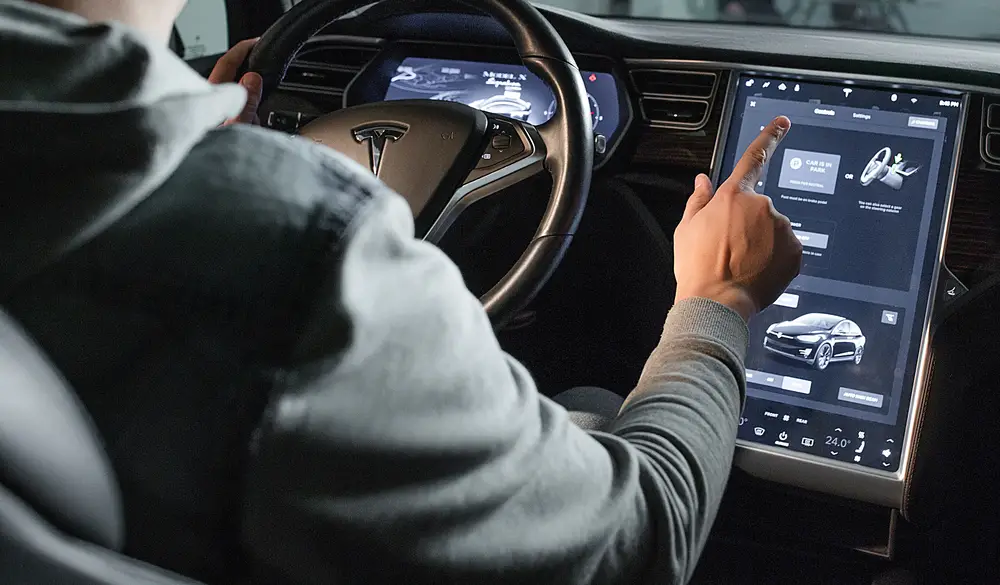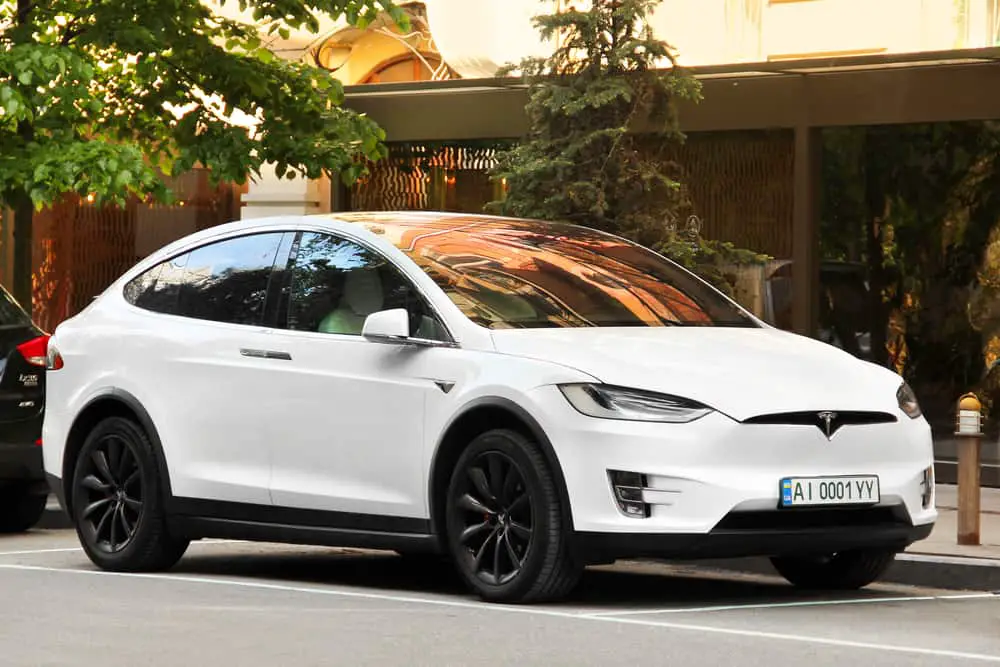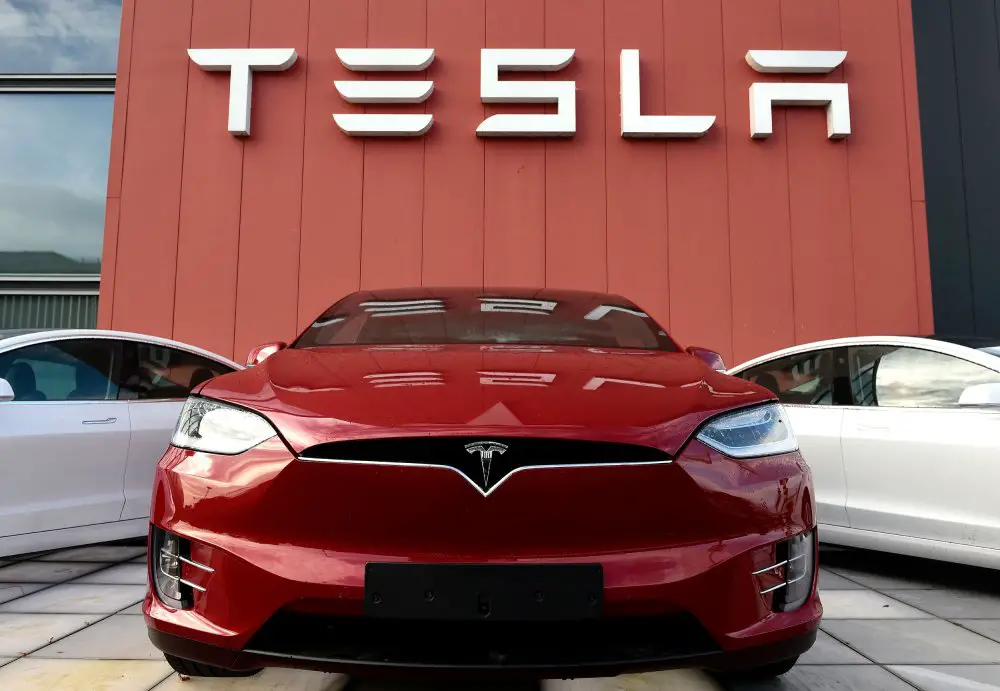Having trouble with your Tesla not connecting to Wi-Fi can be frustrating, especially when you want to enjoy all the amazing features offered by the car’s infotainment system.
Quick Answer:
If your Tesla isn’t connecting to WiFi, it could be due to poor signal strength, inactive internet, outdated car software, or a glitch that a touchscreen restart can resolve. Ensure the car is within WiFi range and the network settings on the car are configured correctly.
There can be various factors that prevent your Tesla from establishing a stable Wi-Fi connection. This might include issues with your Wi-Fi router, the car’s settings, or even software updates.
Possible Causes of Connection Issue
Incorrect Wi-Fi Password
One common reason your Tesla might not be connecting to Wi-Fi is that the password entered is incorrect.
Always double-check the password you have entered for your home Wi-Fi. Depending on your router’s settings, your Tesla may only be able to connect to a specific type of Wi-Fi network, like 2.4 GHz or 5 GHz.
Ensure you are connecting to the correct network and using the appropriate password.
Outdated Software
Another possible cause of connection issues is outdated software. Tesla’s software updates regularly to improve performance and add new features.
If your Tesla’s software is outdated, it may be having trouble connecting to your home Wi-Fi network. To check for software updates, park your car near your Wi-Fi router, with strong signal strength.
Ensure your car is connected to Wi-Fi, and if an update is available, it will download and install automatically.
Network Issues
If your Tesla software is up to date, and you’ve verified the Wi-Fi password, the issue might be with your home network.
Check your router to ensure it’s functioning properly and it’s configured to use WPA or WPA2 security. Additionally, make sure your Wi-Fi network is not using captive portals, as these require additional steps to connect, and Teslas cannot navigate them.
Weak signal strength can also contribute to connectivity issues.
Try parking your car closer to your Wi-Fi router, or consider using a Wi-Fi extender to boost the signal range. If your router is unable to assign a unique IP address to your Tesla, there might be an IP address conflict. In this case, try restarting your router and reconnecting your Tesla to Wi-Fi.
If none of these solutions work, you may need to contact Tesla support for further assistance.
Troubleshooting Connectivity Issues
Reboot Tesla Screen
Sometimes, it’s as simple as rebooting your Tesla’s display screen to resolve connectivity issues. Follow these steps:
- Press and hold both steering wheel buttons.
- Wait for the screen to turn off and come back on (usually takes about 30 seconds).
- Release the buttons and wait for the system to reload.
After the screen has rebooted, check whether your Tesla is now connecting to Wi-Fi or not.
Reset Smartphone Wi-Fi Connection
If your Tesla still isn’t connecting to Wi-Fi, try resetting the Wi-Fi connection on your smartphone. This can help if you’re using your phone as a hotspot. Follow these steps:
- Disconnect your phone from any Wi-Fi networks.
- Turn off your phone’s Wi-Fi and then turn it back on.
- Ensure your phone’s hotspot feature is enabled.
- Re-connect your Tesla to your phone’s Wi-Fi network.
Check Home Router Settings
If your Tesla isn’t connecting to your home Wi-Fi, it’s essential to check your router settings. Here are a few things to consider:
- Software update: Make sure your router has the latest software update installed.
- Wi-Fi range: Ensure your Tesla is parked within the Wi-Fi coverage area, as the signal may be weak otherwise.
- Compatibility: Some older routers might not be compatible with your Tesla’s Wi-Fi features. Check your router’s specifications to see if it supports the necessary standards.
Mobile Hotspot vs. Home Wi-Fi
There are two main ways for your Tesla to connect to the internet: using a mobile hotspot or connecting to a home Wi-Fi network. Both methods have their pros and cons, but each offers a reliable connection for your vehicle.
Mobile Hotspot: A mobile hotspot uses your smartphone’s cellular data connection to create a Wi-Fi network that your Tesla can connect to. Most modern smartphones, whether they are Android or iOS devices, have this feature built-in.
The main advantage of using a mobile hotspot is the convenience it provides – you can be anywhere with cellular reception and connect your Tesla to the internet.
However, there are a few downsides to consider when using a mobile hotspot.
First, the data connection will rely on your smartphone’s cellular data networks. This means that if you have spotty coverage or poor signal strength, your Tesla’s connection may not be as reliable.
Additionally, using a mobile hotspot typically consumes more data than connecting to a home Wi-Fi network, which could lead to higher data usage on your phone plan.
Home Wi-Fi: Connecting your Tesla to a home Wi-Fi network offers a more stable and consistent connection. It’s ideal when you’re parked at home and want to ensure a strong connection for software updates or streaming services in your vehicle.
Most home Wi-Fi networks provide faster speeds and more reliable connectivity compared to cellular data networks, which means a better experience for you and your Tesla.
The main drawback of using home Wi-Fi is that it’s only available when your vehicle is within range of your home network. This means that when you’re out and about, you’ll need to rely on a mobile hotspot or Tesla’s built-in connectivity (if available).
WiFi and Software Updates
Your Tesla’s WiFi connection plays a significant role in keeping the vehicle up to date. Regular software updates not only bring enhancements to the car’s performance but also provide updated maps, security settings, and an overall smoother user experience.
So, it is crucial for your Tesla to maintain a stable WiFi connection.
Firstly, make sure your Tesla is parked within the range of your home WiFi network. The signal strength might affect the connection, so find an optimal location to get better network reception.
Additionally, double-check your network settings in the car’s touchscreen display to ensure that the correct WiFi network is selected and the password entered is accurate.
In some cases, the problem might lie with your home network. Resetting your router can help establish a fresh connection with your Tesla. You might also consider checking the security settings of your router to ensure there are no restrictions preventing the car from connecting to the network.
Another factor to consider is the performance of your Tesla.
Just like any other device, your vehicle’s computing system may experience issues that can affect its WiFi connection. You can try rebooting your Tesla’s touchscreen by pressing and holding both the scroll wheels on the steering wheel for a few seconds. This action will force the system to restart and might resolve your connectivity issue.
Lastly, if you have tried the steps mentioned above and are still experiencing issues, there is a possibility that the problem could be related to a larger software bug. In this scenario, you might want to contact Tesla customer support or your local Tesla service center for assistance.
Tesla Models and Connectivity
Tesla Model 3
The Tesla Model 3 is designed to easily connect to Wi-Fi networks for reliable internet access.
To connect your Model 3 to Wi-Fi, go to the Settings menu on the main display, select Wi-Fi, and choose your preferred network. Sometimes, connection issues may arise due to router compatibility, authentication problems, or signal strength.
Updating your vehicle’s software and checking the router settings can often help resolve these issues.
Tesla Model Y
Tesla Model Y owners can also enjoy seamless Wi-Fi connectivity. Similar to the Model 3, connecting to Wi-Fi in the Model Y involves accessing the Settings menu, selecting Wi-Fi, and choosing the appropriate network.
If your Model Y is not connecting to Wi-Fi, ensure that the vehicle’s software is up-to-date and the router settings are properly configured to allow the connection.
Tesla Model S
The Tesla Model S offers internet connectivity via Wi-Fi or the built-in cellular data connection. To connect your Model S to Wi-Fi, tap on the LTE icon on the top right corner of the touchscreen, select Wi-Fi Settings, and then choose the desired network.
Connection issues in the Model S may occur due to outdated software, weak Wi-Fi signal, or compatibility concerns. Ensuring your vehicle has the latest software update and verifying the router settings can help rectify these problems.
Tesla Model X
Similar to the other Tesla models, the Model X also provides Wi-Fi connectivity for its users.
After accessing the Settings menu on the touchscreen, you can connect to Wi-Fi by selecting the appropriate network under Wi-Fi Settings. If your Model X is experiencing connectivity issues, make sure that your vehicle’s software is updated, the Wi-Fi signal strength is adequate, and any router settings are properly configured to allow the connection.
Remember to keep an eye on any potential interference that may affect the signal, as well.
Advanced Wi-Fi Setup
Range Extenders and Antennas
To improve your Tesla’s Wi-Fi connectivity, you can consider using a range extender or installing additional Wi-Fi antennas to boost the signal.
A range extender lets your car connect to Wi-Fi networks that are farther away, while a Wi-Fi antenna offers more precise targeting and stronger signal reception.
- Range Extender: Place the range extender halfway between your Tesla and the Wi-Fi router. Ensure that it has a clear line of sight to the car and the router for optimal performance.
- Wi-Fi Antenna: Installing a high-gain Wi-Fi antenna directly to your Tesla can greatly enhance the Wi-Fi signal strength. Follow the installation instructions provided with the antenna, and ensure it’s oriented for maximum signal reception.
Wi-Fi Access Point Settings
Your Tesla may have difficulty connecting to Wi-Fi if the access point settings on your router are misconfigured. Here are some important settings to check:
- SSID: Make sure the SSID (network name) of your Wi-Fi is visible and not hidden. Tesla vehicles will only connect to visible SSIDs.
- Security: Ensure that the security settings on your router are accurately configured. Tesla vehicles support WPA and WPA2 security protocols.
- MAC Address Filtering: If enabled, add your Tesla MAC address to the router’s whitelist. You can find the MAC address in your car’s Wi-Fi settings menu.
VPN and Security Settings
Using VPN (Virtual Private Network) and certain security settings in your Wi-Fi network can cause connectivity issues for your Tesla. Adjusting these settings might resolve the connection problems:
- VPN: If you use a VPN on your home network, ensure that it supports the connection of your Tesla. You may need to make configuration adjustments on the VPN to allow for proper connectivity.
- Firewall: Verify that your network firewall is not blocking the connection to your Tesla. You may need to edit the firewall settings or create specific rules to allow for the car’s connection.
Additional Troubleshooting Resources
If you’re still having trouble connecting your Tesla to Wi-Fi, there are some additional resources to help you.
First, make sure to check Tesla’s official support documentation on the Tesla app; this often includes step-by-step instructions and helpful tips on common connectivity issues.
For more personalized assistance, you may want to reach out to Tesla’s customer support. They can help guide you through the troubleshooting process and provide any necessary assistance for a smooth Wi-Fi connection.
If your car is still under warranty, this might be a good opportunity to take advantage of it – Tesla’s team is dedicated to helping you make the most of your vehicle’s features.
A few other points worth considering during your troubleshooting process include:
- Double-checking the installation of your Wi-Fi network. Make sure it’s properly set up and that your Tesla is within range. If the installation seems to be the culprit, contact your Wi-Fi provider for assistance.
- Ensuring your Tesla is unlocked. Some connectivity features may be limited when your car is locked, so give it a try when your vehicle is unlocked.
- Verifying if there are any software updates for your vehicle, which can sometimes resolve connection issues.





